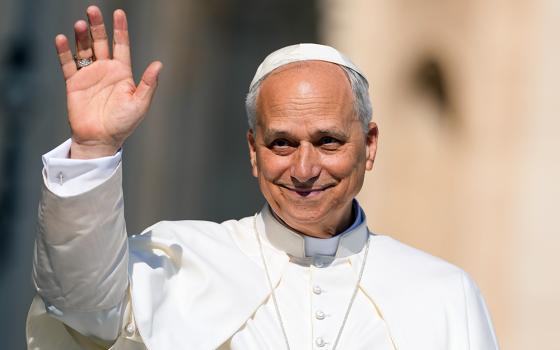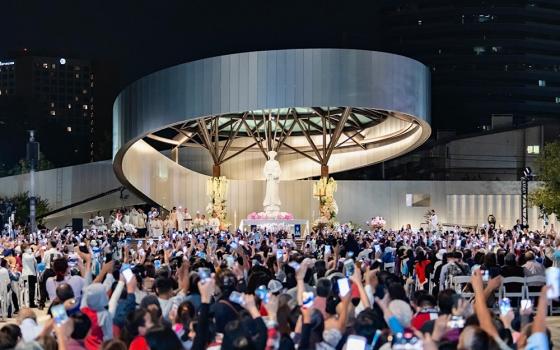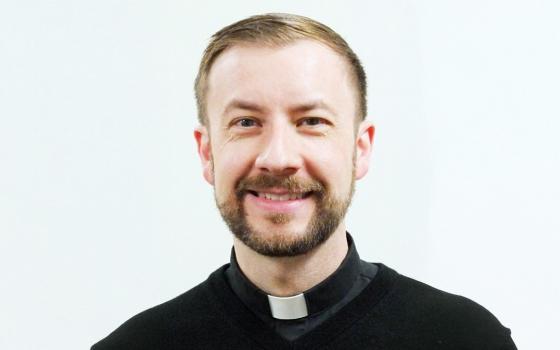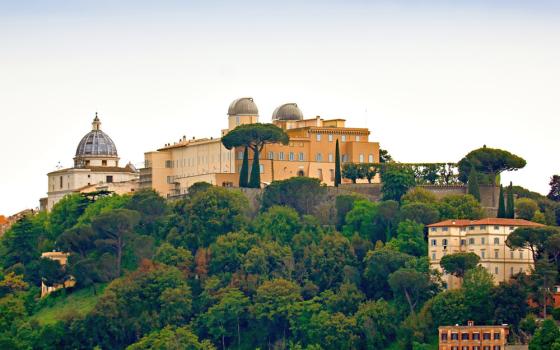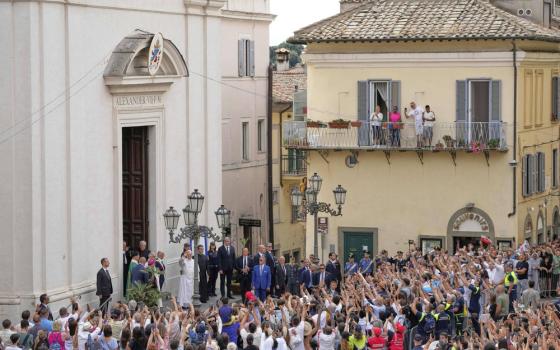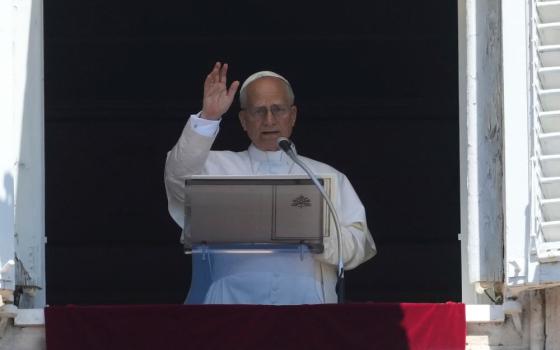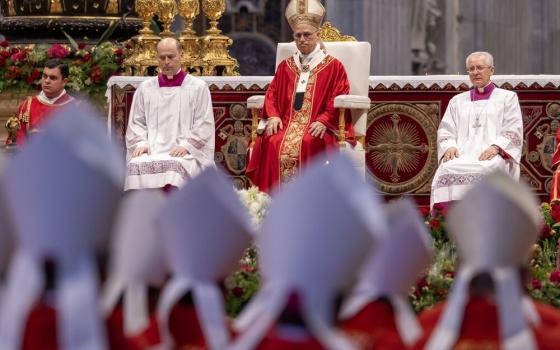
Top row, from left: Pope John XXIII in an undated photo (OSV News/Catholic Press Photo); Pope Paul VI and Archbishop Albino Luciani, the future Pope John Paul I, in 1972 (CNS); Pope John Paul II in 1978 (CNS/L'Osservatore Romano/Arturo Mari). Bottom row, from left: Pope Emeritus Benedict XVI and Pope Francis in 2016 (CNS/L'Osservatore Romano, handout); Pope Leo XIV on May 20, 2025 (OSV News/Reuters/Yara Nardi).
Ever since the installation of Angelo Roncalli as Pope John XXIII in 1958, the successors of St. Peter have established a pattern: pope as disruptor, followed by pope as caretaker.
John XXIII declared his disruption less than three months after his election, calling for the Second Vatican Council on Jan. 25, 1959. Pope Paul VI then became a caretaker of John XXIII's mandate upon his election in 1963.
Pope John Paul I showed signs of a disruptive papacy but died barely one month after his election in 1978. Pope John Paul II took up the role of disruptor with a papacy aimed at reinstating orthodoxy as opposed to Vatican II reforms. Pope Benedict XVI was then elected in 2005 to continue guiding the church in that direction.
Elected in 2013 following Benedict's retirement, Pope Francis was accurately summed up by Michael Higgins: The Jesuit Disruptor.
Every disruptor performed some caretaking, of course, and every caretaker created some of his own disruptions. But the pattern is a useful framework to consider the recent history of the papacy and to imagine its immediate future. It's too soon to know for sure, but early indications are that Pope Leo XIV will caretake the disruptions initiated by his predecessor, and perhaps initiate some of his own.
As Michael Sean Winters wrote before the cardinals convened, the 2025 conclave was most like that of 1958. Even though there were stark differences, especially in the number of cardinal electors (133 vs. 51), Winters points out that most of the cardinals in both conclaves had been appointed by the recently deceased pontiff and would likely favor a successor apt to advance his legacy.
It's my guess that the 1958 cardinals figured they were electing a caretaker, and instead elected one of the greatest disruptors in the history of the church. John XXIII called the 1962-65 Second Vatican Council for a reason: He realized the church's position with respect to modernity and the modern world had to change. The church could no longer circle the wagons and call Catholics to continue to live in a separate world within a medieval institution.
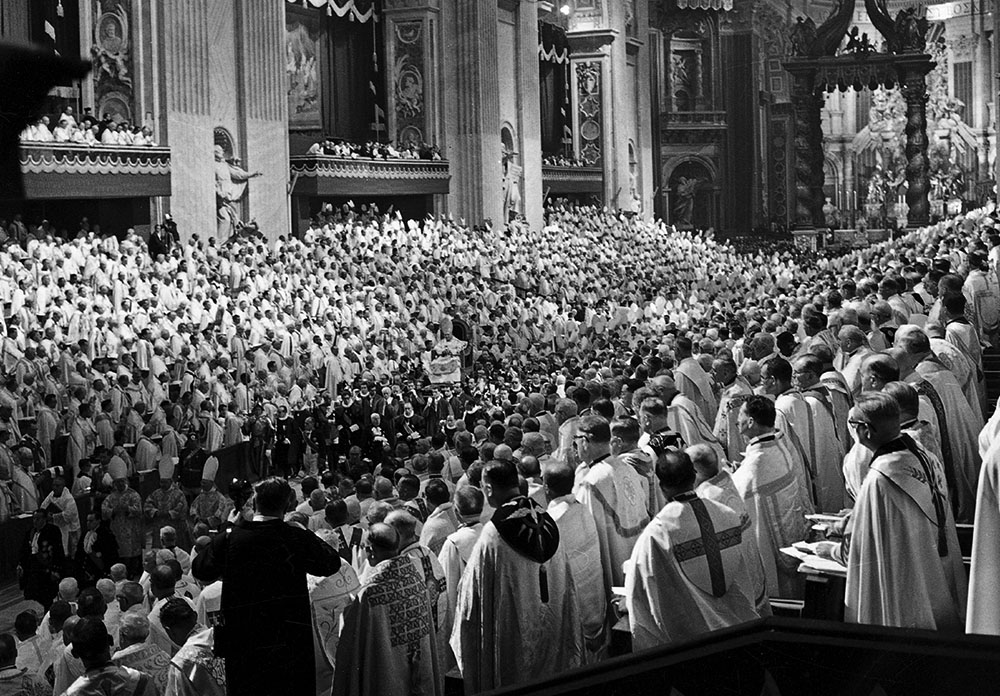
Pope John XXIII leads the opening session of the Second Vatican Council in St. Peter's Basilica Oct. 11, 1962. (CNS/L'Osservatore Romano)
The degree of disruption could be measured by the paradigm shift that Vatican II ushered in: that the church — as opposed to the clergy — is the people of God.
For all his disruption, John XXIII emerged as a caretaker to church doctrine, reinforcing the church's teaching on divorce even as he launched a commission on birth control.
After John XXIII died in 1963, Cardinal Giovanni Montini was elected pope. Montini was a bit of a superstar within the church, having been a close adviser to Pope Pius XII and appointed archbishop of Milan. Montini, who chose the name Paul VI, was elected to take care of Vatican II, and that defined his papacy.
But he rubbed against that role when he initiated his most disruptive act: rejecting the recommendations of his own Commission on Birth Control and continuing the church's traditional prohibition.
The death of Paul VI set in motion the most bizarre sequence of the modern church. The first 1978 conclave selected Albino Luciani, cardinal of Venice, Italy. He took the name John Paul I as both a sign of his affection for the two previous popes and that the work of Vatican II would go forward.
But if John Paul I was going to be a caretaker, he quickly showed he was also going to be a disruptor. He avoided many of the trappings of the office, gestures that were perhaps not lost on Jorge Bergolio in Argentina. He had shown a commitment to the poor in Venice, and did not lose that focus as pope.
Advertisement
Following John Paul I's death after just a month as pope, the second 1978 conclave chose another charismatic figure who wasted no time becoming a disrupter — a pope who would turn back the clock on Vatican II.
As John Paul II, Karol Wojtyla almost immediately declared war on liberation theology, told American clerics to leave political office if they held it, and ushered in an era of reestablishing church traditions and dogma. Vatican II seemed more than just reined in, it seemed under attack; especially by John Paul's enforcer, Cardinal Joseph Ratzinger.
But John Paul II also took some bold caretaker positions: maintaining the church's antagonistic stance toward capitalism, all but banning capital punishment, and categorically refusing to reinstall the Tridentine Mass as the official liturgy of the church.
Still, John Paul II's explicit renunciation of modernity and its "moral relativism" made his papacy profoundly disruptive. When the cardinals selected Ratzinger as his successor, it became clear that Vatican II reforms would continue to be downplayed. As Benedict XVI, Ratzinger returned to the royal trappings of the papacy, including ermine and ceremonial red shoes. The world braced for an even more virulent return to the past, but it never came.
As quickly as Wojtyla asserted his authoritative return to tradition, Ratzinger abandoned his hatchet man persona and became a caretaker pope. He saw his job as being the church's chief theologian against moral relativism, but he stopped looking for it under every pew and in every seminary. The dreams of the Catholic right went largely unfulfilled with Benedict, who at most created more tolerance for the Tridentine Mass.
As a caretaker pope, though, Benedict performed the most disruptive papal act in nearly 600 years: He resigned.
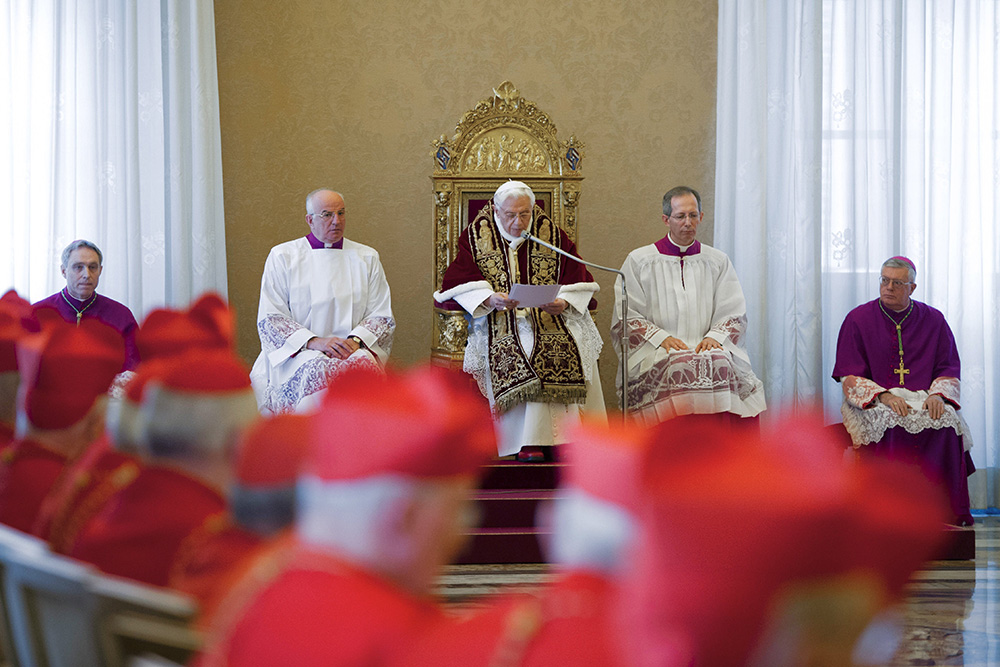
Pope Benedict XVI reads his resignation to a meeting of cardinals at the Vatican Feb. 11, 2013. (CNS/Vatican Media)
Jorge Bergoglio announced he was a disruptor the very second he stepped onto the loggia wearing all white rather than traditional papal vestments. Then he asked people to pray over him.
The change was not just ceremonial, with Francis eschewing the Vatican apartments; describing the church as a field hospital for the wounded; asking, "Who am I to judge?" Francis was a radical turn from Benedict and exactly the kind of fresh air that John XXIII wanted to let into the church.
A Jesuit, Francis nonetheless exuded a Franciscan charism and asked the world to follow suit with his encyclical "Laudato Si', on Care for Our Common Home."
Progressive Catholics, however, found Francis to be frustratingly stuck in caretaker mode when it came to overturning the church's teaching on homosexuality, women's ordination, and celibacy. Rather than issue an authoritarian ruling, Francis handed those issues over to the synodal process he created to consider such questions.
What can we expect from Fr. Bob Prevost, now Leo XIV? Elected to continue the legacy of Francis, Leo was quick to assert that he is his own man: choosing a name not linked to Francis, returning to papal vestments, and eschewing some of the humble trappings favored by Francis. In his first Sunday address as pope, the cardinal who had condemned Putin's invasion of Ukraine as imperialist now pulled his punches with a less direct assertion: "I carry in my heart the suffering of the beloved Ukrainian people."
For his first trip as pope, Francis chose the Italian island of Lampedusa to spotlight the struggle of migrants. Where will Leo go?

